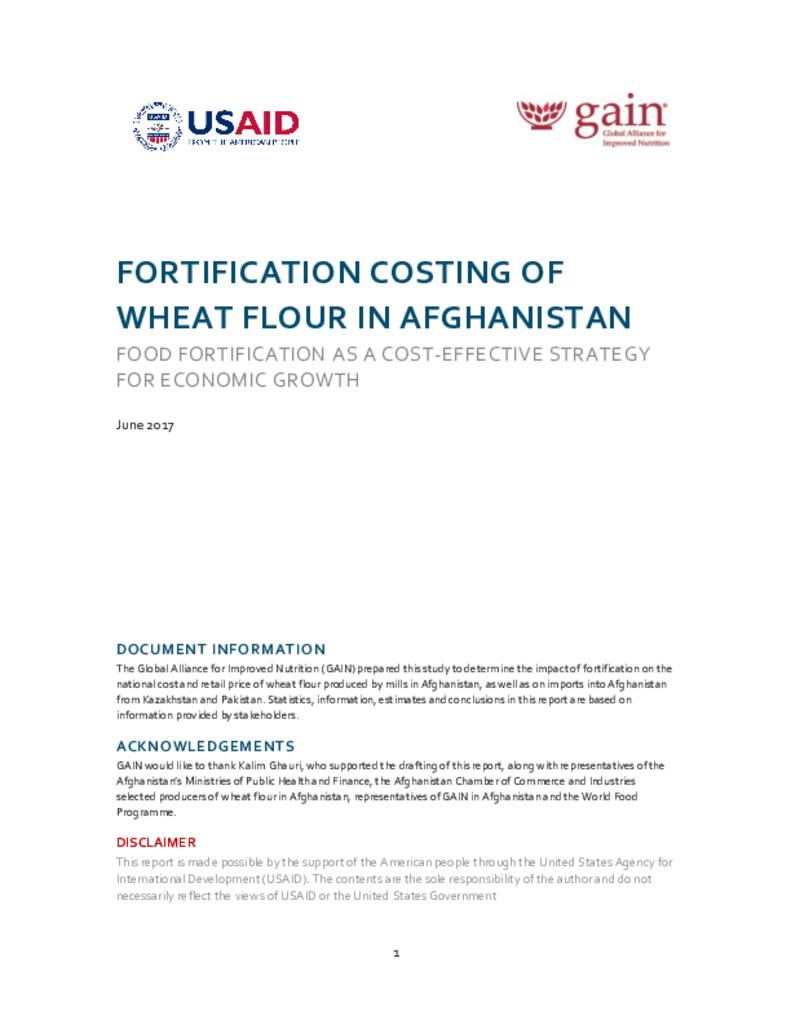Micronutrient malnutrition is a major problem in Afghanistan. Half of all children 6-59 months old are vitamin A deficient, while sixty-four per cent lack adequate vitamin D in their diets. About thirteen per cent of children and of women of reproductive age have iron deficiency anaemia and 7%of adolescent girls (10-19 years) had folate deficiency.
A Cost Benefit Analysis (CBA) conducted by GAIN, with support from USAID, looked at the cost-effectiveness of wheat flour fortification in addressing micronutrient malnutrition. Analysis revealed that over a ten-year period, a successful fortification program would reduce these losses by USD664.69 million.
This report analyses the cost of fortification of wheat flour in Pakistan, Afghanistan and Kazakhstan, using both Afghan and regional harmonized standards; assesses its impact on market prices of wheat flour for a sustainable fortification program in Afghanistan; and makes recommendations on policy and pricing strategies for domestic and cross-border trade.
